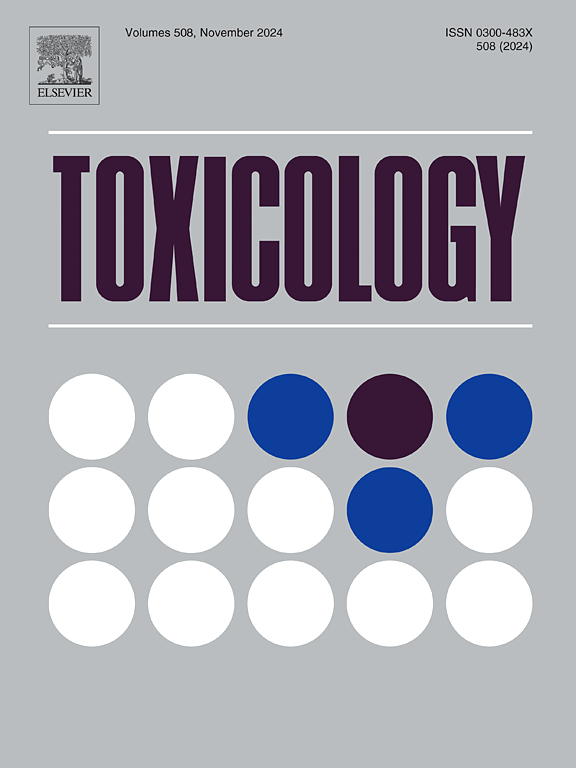Differential life cycle toxic effects and molecular mechanisms of Di(2-ethylhexyl) phthalate (DEHP) exposure on the female reproductive system
IF 4.6
3区 医学
Q1 PHARMACOLOGY & PHARMACY
引用次数: 0
Abstract
Di(2-ethylhexyl) phthalate (DEHP), the most prevalent plasticizer worldwide, can enter the human body via various exposure pathways, including ingestion, inhalation, skin contact, and medical applications. It has been observed to exhibit characteristic patterns of accumulation in the female reproductive system. Research has demonstrated that DEHP poses a threat to reproductive health in females across various life stages. Exposure during childhood has been demonstrated to induce central precocious puberty (CPP). Exposure during reproductive age has been shown to be closely associated with reduced fertility, reproductive system tumors, polycystic ovary syndrome (PCOS), and increased risk of endometriosis. Furthermore, exposure during the perinatal period has been demonstrated to increase the risk of embryo implantation failure, placental dysfunction, and abnormal ovarian development in offspring. The toxic effects of DEHP exhibit transgenerational transmission characteristics, with its metabolic products' endocrine-disrupting activity and oxidative stress-inducing capacity being the core toxic factors. This study integrates toxicological evidence linking DEHP exposure to female reproductive damage, providing important references for environmental health risk assessment and the prevention and control of female reproductive diseases.
邻苯二甲酸二(2-乙基己基)酯(DEHP)暴露对女性生殖系统的不同生命周期毒性效应和分子机制。
邻苯二甲酸二(2-乙基己基)酯(DEHP)是世界上最普遍的增塑剂,可通过各种接触途径进入人体,包括摄入、吸入、皮肤接触和医疗应用。它已经被观察到在女性生殖系统中表现出典型的积累模式。研究表明,DEHP对女性各个生命阶段的生殖健康构成威胁。儿童时期的暴露已被证明会诱发中枢性性早熟(CPP)。育龄期暴露与生育能力下降、生殖系统肿瘤、多囊卵巢综合征(PCOS)和子宫内膜异位症风险增加密切相关。此外,围产期的暴露已被证明会增加胚胎着床失败、胎盘功能障碍和后代卵巢发育异常的风险。DEHP的毒性作用具有跨代传递特征,其代谢产物的内分泌干扰活性和氧化应激诱导能力是核心毒性因素。本研究整合了DEHP暴露与女性生殖损害的毒理学证据,为环境健康风险评估和女性生殖疾病防控提供重要参考。
本文章由计算机程序翻译,如有差异,请以英文原文为准。
求助全文
约1分钟内获得全文
求助全文
来源期刊

Toxicology
医学-毒理学
CiteScore
7.80
自引率
4.40%
发文量
222
审稿时长
23 days
期刊介绍:
Toxicology is an international, peer-reviewed journal that publishes only the highest quality original scientific research and critical reviews describing hypothesis-based investigations into mechanisms of toxicity associated with exposures to xenobiotic chemicals, particularly as it relates to human health. In this respect "mechanisms" is defined on both the macro (e.g. physiological, biological, kinetic, species, sex, etc.) and molecular (genomic, transcriptomic, metabolic, etc.) scale. Emphasis is placed on findings that identify novel hazards and that can be extrapolated to exposures and mechanisms that are relevant to estimating human risk. Toxicology also publishes brief communications, personal commentaries and opinion articles, as well as concise expert reviews on contemporary topics. All research and review articles published in Toxicology are subject to rigorous peer review. Authors are asked to contact the Editor-in-Chief prior to submitting review articles or commentaries for consideration for publication in Toxicology.
 求助内容:
求助内容: 应助结果提醒方式:
应助结果提醒方式:


